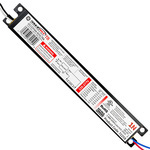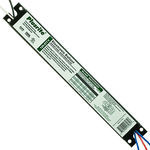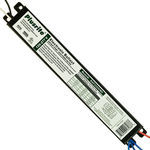F17T8 to F32T8 - Fluorescent Ballasts
Your Guide to Fluorescent Light Ballast Replacements
Whether you're performing a fluorescent light ballast replacement or retrofitting a fixture using F32T8 ballasts, 1000Bulbs.com makes it easy to find the perfect match. From F17T8 and FB24T8 to F32T8 ballasts, we carry options compatible with nearly every lamp type and configuration.
All you need to select the right ballast are three details:
- Number of lamps
- Start method
- Desired light output (ballast factor)
Number of Lamps
The number of lamps your fixture powers will determine the type of fluorescent light ballast required. Whether you're using 1-lamp, 2-lamp, 3-lamp, or 4-lamp ballasts, we have the right options for linear and U-bend configurations.
Start Method: Instant Start vs. Programmed Start
Instant Start
Best for offices, warehouses, or retail spaces where lights are turned on and off infrequently. This type provides fast ignition and energy savings.
Programmed Start
Ideal for locations with occupancy sensors like hallways, stairwells, and restrooms. Designed to reduce wear from frequent on/off cycles, extending lamp life.
Ballast Factor – Adjusting Light Output
- Low Ballast Factor (< 0.77): Reduces energy use and light output; ideal for low-light environments like hallways and restrooms.
- Normal Ballast Factor (0.77–1.1): Produces standard lumen output and is ideal for offices, classrooms, and retail lighting.
- High Ballast Factor (> 1.1): Overdrives lamps for 10%+ higher output, perfect for high-bay fixtures and warehouse lighting.
Need a Fluorescent Light Ballast Replacement?
When your light flickers, hums, or won’t turn on, it's often time to replace the ballast. Our selection of F32T8 ballasts includes trusted brands that meet ANSI standards and ensure reliable performance.
If you're upgrading from fluorescent to LED, consider Type B or Type C LED T8 tubes that eliminate the need for a ballast altogether—perfect for long-term energy and maintenance savings.
Frequently Asked Questions
How do I replace a fluorescent light ballast?
Turn off the power, remove the fixture cover and fluorescent tubes, and disconnect the wires from the old ballast. Replace it with a new compatible ballast, match the wiring connections (following the diagram), and reassemble the fixture. Always follow local electrical codes or hire a qualified electrician.
How do I test a fluorescent ballast?
Use a multimeter to check voltage at the ballast output wires. If no voltage is present when the power is on—or if there's visible damage, humming, or flickering—it’s likely the ballast needs replacement.
Can you get warm fluorescent light bulbs or LED tubes that don’t use a ballast?
Yes! Warm white fluorescent tubes (typically 3000K) are widely available. For an upgrade, consider ballast bypass LED tubes, which offer warm color temperatures without needing a ballast—ideal for long-term energy savings and reduced maintenance.




